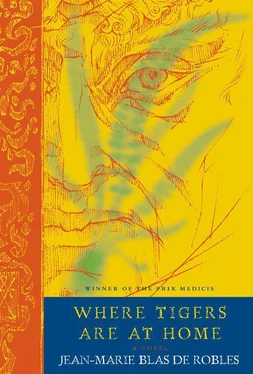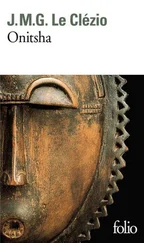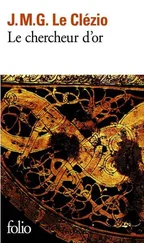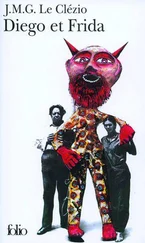“Imagine you’re a bird with a taste for reptiles,” he had said, “and you try to eat the first of these three snakes. What ensues? You die on the spot without realizing what’s happened to you and without having time to warn the other birds of the danger. The effect of this, in the shorter or longer term, would be the elimination of the predator-of-reptiles-bird species from the natural world. The same with the third: you eat the snake and, since nothing happens, you deduce that coral snakes are highly comestible. Result — the disappearance of your species when these reptiles eventually become venomous. If you get bitten by the second snake, the one that is poisonous but not deadly, you will suffer for a certain time then you will pass on the information as quickly as possible: eating a snake with black and red rings is very dangerous, it’s best to avoid all snakes that more or less answer to that description. That, therefore, is the snake that will be the first to appear. Of necessity. Left in peace by the birds, its potential enemies, our coral snake can now develop other forms better adapted to its own needs, until eventually you get the Rolls Royce of the species, the one whose bite is terminal. As for the third, indubitably the most cunning, it’s an animal of a species that has nothing to do with the previous two but that decks itself out in the colors of the coral snake to be left in peace, as they are, at very little effort. Having said that, he went on, not without a touch of irony, the natural resistance to the toxins shown by certain predators of reptiles, including several birds, presents an exciting problem, which down to this day is still …
Elaine wondered which of these three snakes was gliding along in front of her. When it had disappeared, she saw again the shaman place a strange bundle at her feet just before the horror had started to spin its web. Her mind a blank, she went over to it, then with the tips of her fingers, she undid the cover of plant fibers. Despite the greenish swellings distorting its old leather cover, she realized it was a book, a folio volume that she hastened to take out of its envelope and open at the title page. This impulsive action revealed the answer: Athanasii Kircherii è Soc. Jesu Arca Noe, in Tres Libros Digesta …
Noah’s Ark! THE shaman had had one of Eléazard’s favorite books in his hands. She was less surprised at such a coincidence than to see her husband emerge from the blind spot of chaos, as if to help her, to encourage her from afar to pull herself together. The book affirmed his presence with her and, in an equally mysterious way, justified the bee in his bonnet he had about Athanasius Kircher. It gave off a dubious magic, disproportionate tension. Elaine leafed through the damp pages spotted with brownish marks. Following Arca Noe , all the illustrations from Ars Magna Lucis et Umbrae and Mundus Subterraneus had been bound in; manuscript notes on several of the flyleaves formed an embryonic dictionary, a glossary, rather, such as missionaries who were approaching an unknown tribe would create. The fact that the glossary established links between Latin and the natives’ language, that it was written down with a quill pen, the very style of the handwriting, all indicated that Kircher’s book had belonged to one of the first Westerners charged with exploring the New World. Putting together these clues and the course of her own encounter with the Indians, Elaine felt she could reconstruct the story with a certain degree of probability:
One day a man, probably an ecclesiastic, had set off into the jungle with the scanty gear of all candidates for martyrdom: a Bible, a little collection of trinkets and mirrors, and one of those copiously illustrated manuals in which Kircher demonstrated better than anyone the superiority of the Christian religion. Certain Jesuits, Eléazard had told her, simply sat down in the depths of the forest and played the flute, or even the violin, until the Indians appeared. Like modern Orpheuses, they were lying in wait for souls, alternating music and prayer. By persevering, the Jesuit had managed to remain alive and settled in with a tribe, starting to learn their language. He had to point to earthly creatures, the plants, trees, animals in Kircher’s book, and name them one by one with infinite patience; having done that, he could go on to supernatural matters, dig up the mythology of these savages and set about converting them. A few conjuring tricks, a lot of diplomacy and the Jesuit made a shaman — only too happy to come out of it so well — his ally and disciple. The missionary could speak — or thought he could speak — the language of his flock, he’d managed to baptize the children and even adapt some hymns; as for the shaman, he knew whole speeches in Latin and could jabber along in his instructor’s language in a way that aroused great hopes … But then the privations, malaria or some sordid act of revenge put an end to the good Jesuit’s undertaking. The tribe returned to its primitive existence. With the luster of new powers, the shaman took charge of the books and continued on the path that had served his foreign colleague so well. Tirelessly he repeated the Latin he had learned with such difficulty, told all the others that a prophet had come, but that another would come later, that he would have a beard, as in the engraving of Kircher at the beginning of the book, and that he would lead them to some paradise. The shaman died in his turn, after having passed the whole of his knowledge on to his son, and that had continued for four hundred years. At each transfer of the original message, something was lost, with the result that these people had come to worship Kircher himself: Qüyririche was the corresponding word in the glossary. Seeing Dietlev, the Indians had easily identified him as the messiah of the original myths. Even the fossils had played their part in this incredible misunderstanding; several of them were shown in the book, the new arrivals had some in their baggage, a great number lay hidden in the mountain. Signs that the shaman had put together, in one way or another, to reach the conclusion that the end of time was imminent.
However outrageously improbable it sounded, this explanation was the only one to give a logical shape to the horror she had been through. A misunderstanding, an appalling millenarian misunderstanding that had cost the lives of a whole tribe. Elaine found it tormenting not to have anyone to share this sudden insight with. The Bible had doubtless been lost, but the book open on her knees — the shaman’s aracanóa! — had symbolized the sacred for generations of men to the point where it led their descendants to the abyss. Eléazard and Moéma would have been over the moon! Poor Dietlev as well, moreover, though he would have doubtless have been less interested in the living fossils than in those brought back by the old man from his stay in the mountain.
Elaine once more awoke to the world around her to realize she had climbed to the summit of the inselberg. The book was no longer there; it must have been left somewhere behind her. Despite her surprise and her alarm at the black holes into which her mind was retreating more and more often, she was happy to come out into the open air. The rocky crest around her was one great jumble of petrified impressions. Tribrachidium? Archaeoscyathids? Parvancorina ? Her memory was uncertain about giving names to the stones cascading from this spring turned to stone: a unique crucible of algae and invertebrates, a puddle of time, of the initial time when the whole of the Earth was nothing but a tragic and unpopulated ocean. On this shoal, six hundred million years ago, the sea had hatched the miracle of life. An uninterrupted link connected her with these blind, impoverished creatures, let her share in their destiny of primordial glyphs. In the eye of the cyclone, at the very heart of the whirling that was raising the black waters of the forest beneath her, Elaine knew that she was finally going to be able to come to rest. Eléazard, Moéma … she found them both again, here and now, having taken such a long way around to them. A solar mirror reflecting the dizzying universe, she saw for a moment the absolute coherence of everything that exists. This nonplace, this still center with the frail shell of life coiled around it, now she felt it, now she occupied the smallest gap in its space. Freed from hope, smiling, she felt like a deserted ark.
Читать дальше












